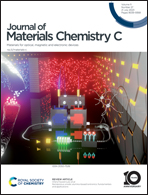Nanoporous anodic alumina-based iontronics: fundamentals and applications
Abstract
Synthetic iontronic systems harness ions as elementary carriers to perform functions that mimic those of biological systems; such as information transduction, sensing, and energy generation. The underlying principle of synthetic iontronics is to control the concentration, depletion, flow, and spatial and temporal distribution of ions when these flow along engineered nanochannels. Synthetic iontronic materials enable unique forms of ion transport phenomena such as rectification and switching, which resemble those of solid-state electronics. Nanoporous anodic alumina (NAA) is a versatile material with tailorable structural and chemical properties that provides an ideal platform for developing a range of iontronic devices. NAA membranes exhibit both intrinsic and extrinsic ionic rectification properties, where the former has recently been associated with the presence of its anodic oxide barrier oxide layer at the bottom tips of its nanopores, and the latter can be achived by engineering its structure and through surface chemistry modifications. This review provides a comprehensive overview of NAA as an iontronic platform material, from its intrinsic and extrinsic properties to proof-of-concept demonstrations of NAA-based iontronic systems for applications such as ionic diodes, bio- and chemical sensing, and osmotic energy generation.

- This article is part of the themed collections: Journal of Materials Chemistry C Recent Review Articles and Journal of Materials Chemistry C Emerging Investigators


 Please wait while we load your content...
Please wait while we load your content...